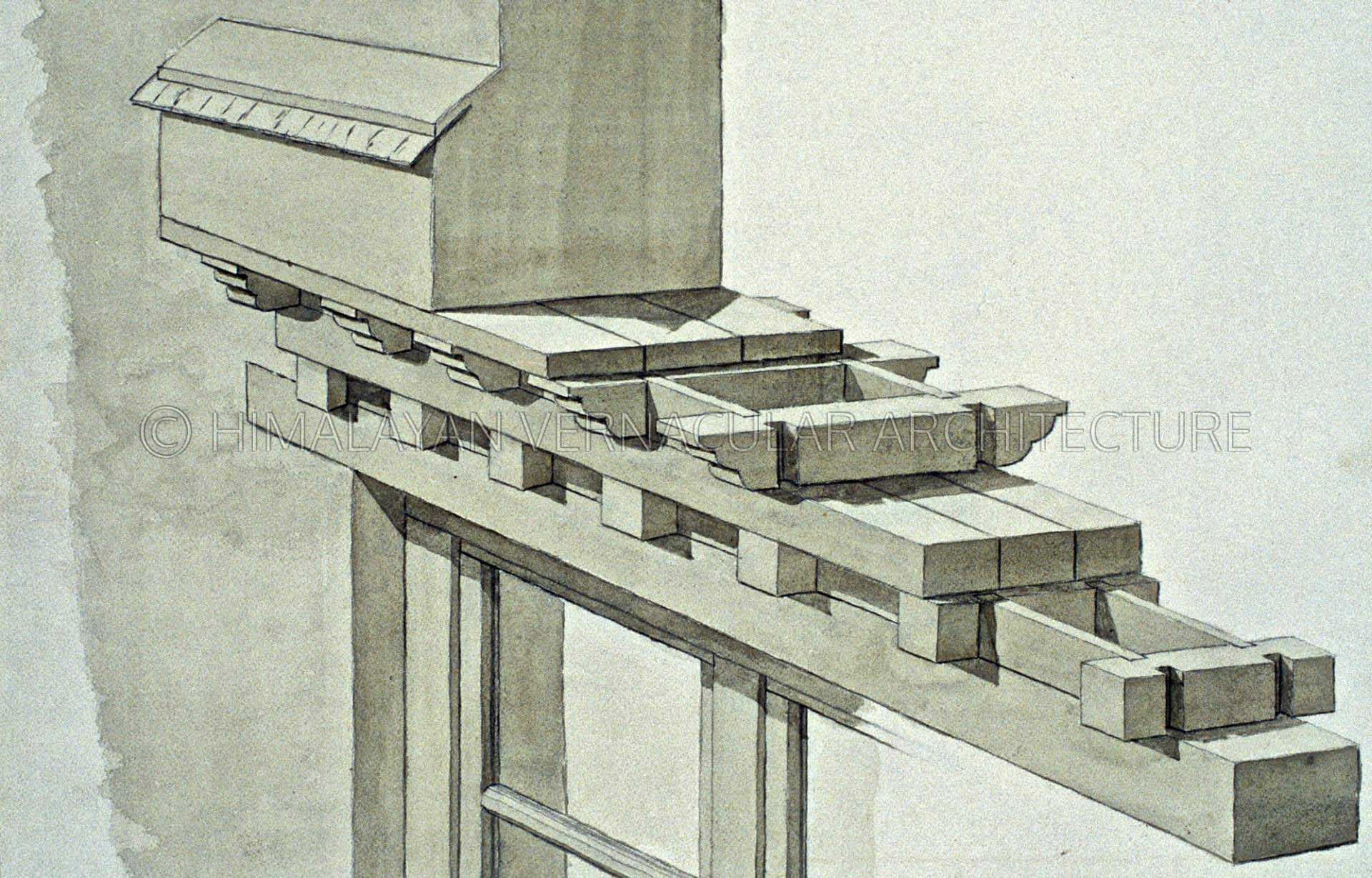Ladakh, Nurla
The houses of Farkethang stand at the verge between the irrigated land and the desert landscape. The long channels ferry the water from a narrow branch of the Indus River to the village where it is distributed by finely tuned small channels. The small village appears as a green oasis in the barren landscape. The irrigation of the summer snowmelt from the high mountains is essential to the agriculture in Ladakh.
The internal vertical arrangement of space within the Ladakhi residence represents the Tibetan cosmology. The stables on the ground floor represent the animal realm; the human realm is represented by the family’s living rooms that are located at the first elevated level. The shrine room is located on the roof that represents the realm of the gods. The central and most important room is the kitchen where most of the family’s daily activities take place. It is a multifunctional room serving as kitchen, common living room, guest room and bedroom.
Leh District, Khalsi Tahsil, Farkethang Villageལ་དྭགས།

© HVA 2014

Aerial view on Farkethang village © HVA 2014

Details of paintings on pillar and beams, Farkethang Gongma © HVA 2014

Isometric view of lintel (shing tsak) assembly, Farkethang Gongma © HVA 2014